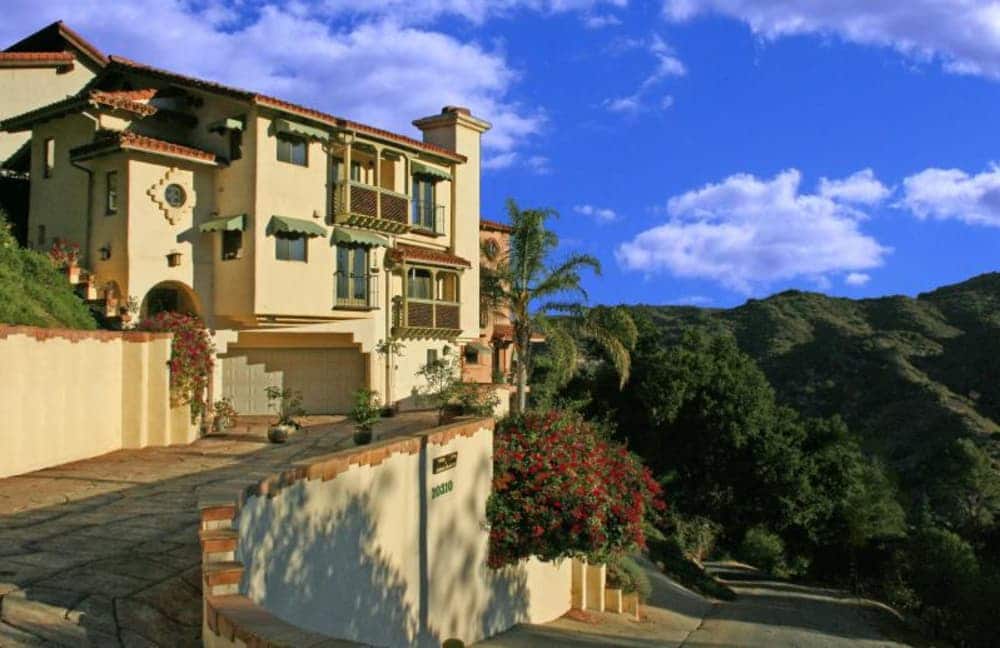Again and again, guests ask us about the history behind the two houses comprising the Topanga Canyon Inn Bed and Breakfast. Many of our guests remark that the architecture and surrounding scenery of the Inn makes them feel like they're in Italy. They are also often surprised when we tell them that the two houses—Casa Blanca and Casa Rosa—are only about 30 years old. The owner and the host of the Inn, Warren Roche, is a lifelong Californian and avid traveler. He designed and built the homes to evoke a sense of having returned to pre-Depression (1929) California when the magnificent houses of Wallace Neff, and George Washington Smith were at their zenith. The Inn is fairly new, but its design is deeply rooted in Californian history and the state's contributing cultures.
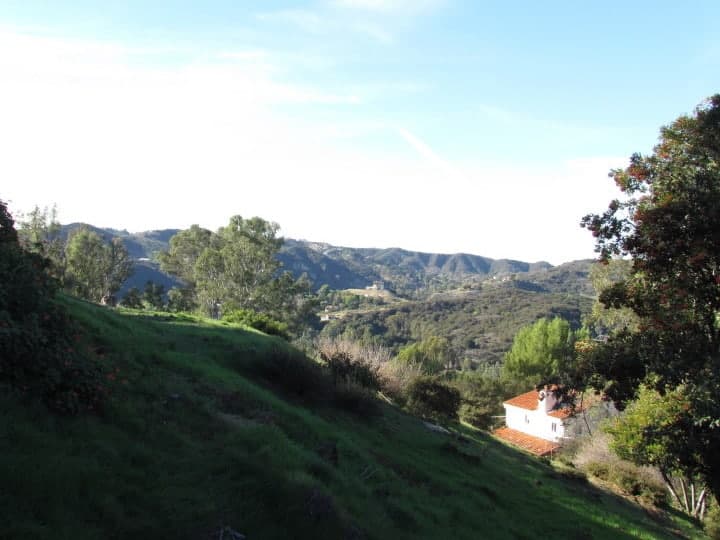
1. Tile Everywhere
The first thing most viewers notice about Mediterranean architecture is the signature red tile roofs. There is a very practical reason for these bright and cheery rooftops: they are fireproof and last forever. The warm climate of the Mediterranean, Southern California, and Mexico mandates a simple technique for temperature control: it's called passive heating/cooling. Inside the house the Saltillo tile floors absorb the ambient temperature and slowly release it, moderating the temperature swings of night and day . Passive cooling was a necessity for the dwellers of California before the days of air conditioning, but the beautiful, bright tiles still hold their charm for contemporary Californians. We at the bed and breakfast do have air conditioning, but are proud that the Inn could also function comfortably without it.
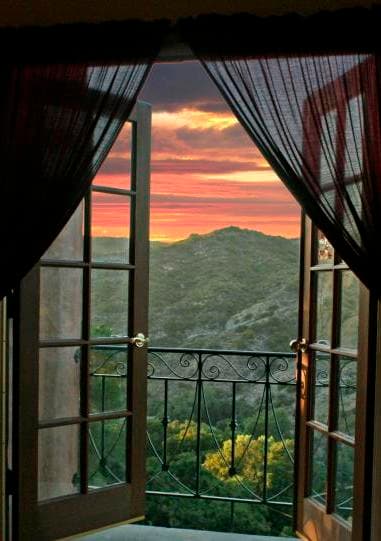
2. Wrought-Iron Balconies
A Mediterranean house is simply incomplete without elegant balconies and decks surrounded by ornamental wrought-iron. Most frequently used in southern European architecture, these balconies create a small hanging sanctuary suspended in air, linking the home to nature . We have, however, excluded the similarly beautiful traditional window bars that served to keep banditos out of the fonda (inn). Topanga Canyon is a safe area, and both we and our guests love to open the windows and lean into the night breeze, Romeo and Juliet style.
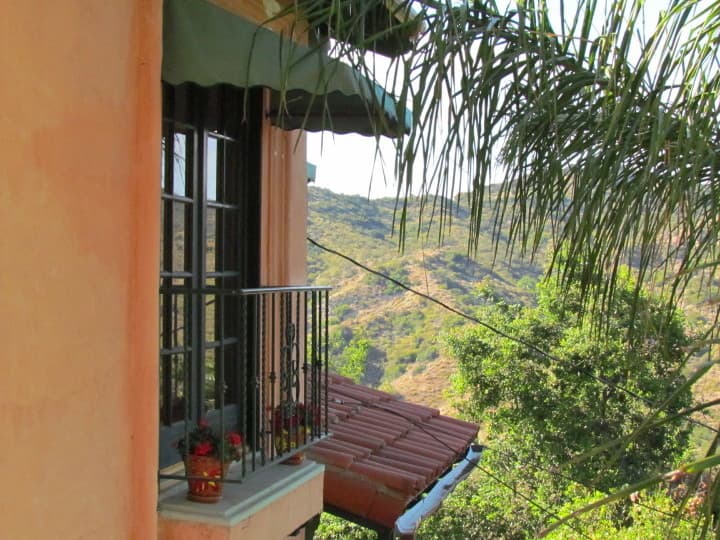
3. Plaster Walls
In much of the architecture of the Mediterranean, Mexico, and California, you will notice an absence of wooden walls. While wood is used in heavy beams and doors, the walls are plaster. The dry climate of the respective areas is not kind to wood, which expands from winter rain only to shrink, bend, and distort walls in the summer. Plaster, however, not only helps keep homes cool in the summer, but it can withstand the seasonal changes in humidity. Traditionally, plaster walls are painted in various light, warm shades, such as egg-shell, peach, or mustard. The names of the two houses of the Inn—Casa Blanca (the white house) and Casa Rosa (the pink house)—are painted accordingly and continue this colorful tradition.

4. Talavera and Saltillo Tile
The floors of the Inn are covered in the traditional peachy Saltillo tile so characteristic of Mediterranean homes and old Californian architecture. Again, there is practicality behind the aesthetic: like the roof tiles, the floor tiles help with passive cooling and heating. We make a point of having authentic tiles, made in Mexico using most of the same techniques as were utilized 200 years ago: observe closely, and you will notice that the tiles in the Casa Rosa have animal prints from Mexico's wildlife that pass through when the tiles are soft and left out to dry. The stair risers are often covered with colorful, patterned Talavera tiles from Pueblo, Mexico. Each riser uses a different pattern and color which delights the eye as you ascend and distracts from the effort of climbing the stairs.
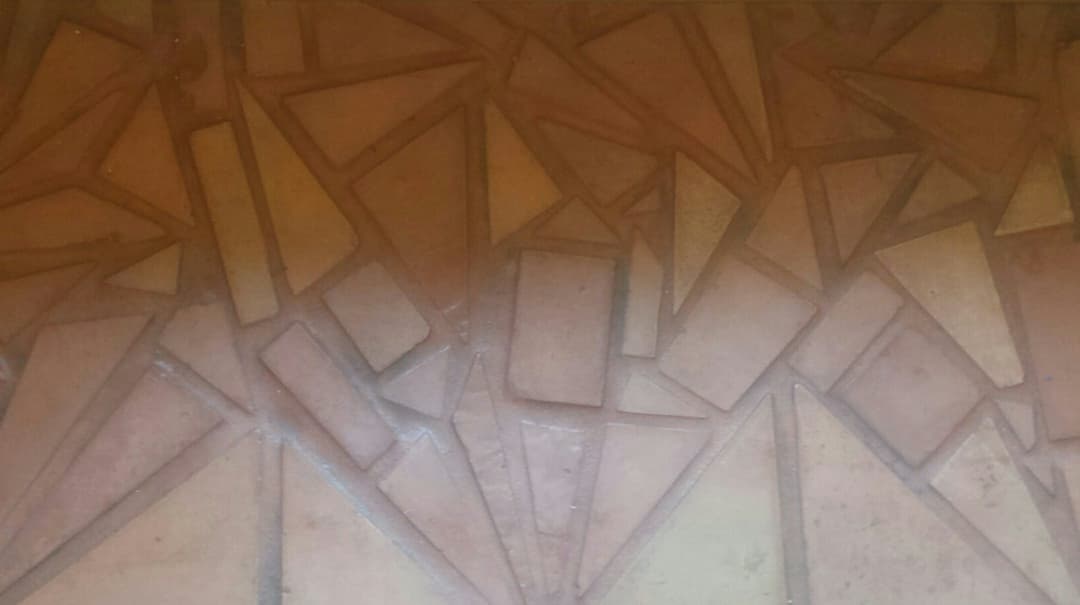
5. Spirit Traps
If you can pull your gaze away from the mountain views just outside our balconies, you will notice that you might be standing near a spirit trap. This arrangement of broken tilework at the threshold of the doors is inspired by Moorish folklore via Arabia, which advises complex, maze-like patterns to be placed near entrances. As folk wisdom suggests, malevolent spirits seeking to enter the home will become lost within the maze, unable to do harm to the home's inhabitants.
One of the joys of studying architecture is its aesthetic, the beauty that can be created out of the practical need for a living space, and the way functionality becomes ornamental. The other is the sheer amount of history tightly wrapped up in every detail, from the color of a house to the designs in the floor. Studying the Casa Blanca and Casa Rosa is like opening a history book about those few places on earth that enjoy a Mediterranean climate and how our version was settled by indigenous peoples and founded by Mexicans and Spanish explorers and missionaries. The Inn is still young, but its architecture is a tribute to the history of some of the most beautiful places on Earth.

